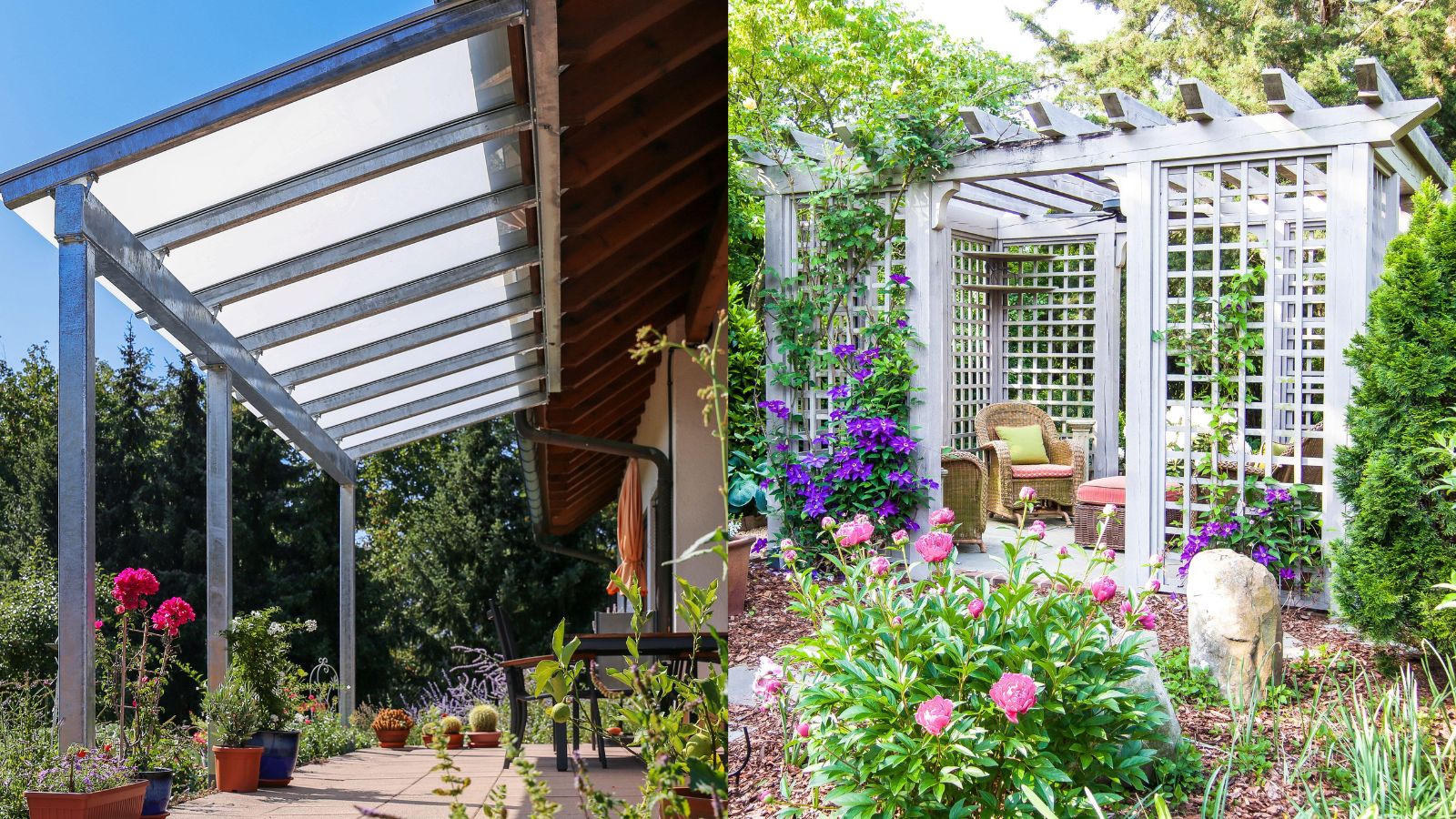
Pergolas are a classic part of garden design. They offer stylish, cool respite from the sun and support for climbing plants.
However, we're starting to see more and more patio covers - small awnings that lean against a house for shade and shelter.
Both of these structures are very big investments. I spoke to an outdoor structure specialist about the two designs, and which will work best for your yard.
What is a patio cover?
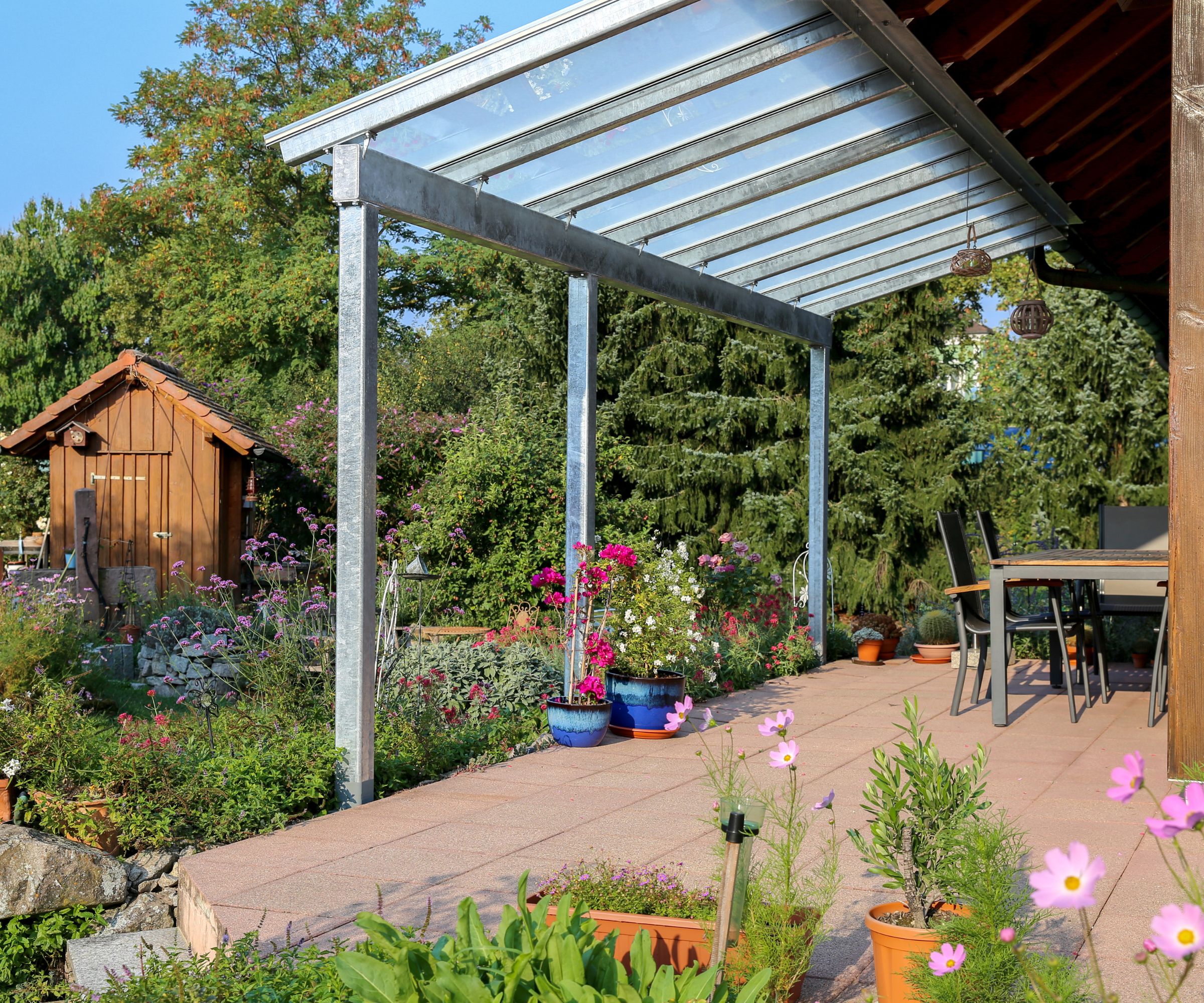
A patio cover is a type of garden structure similar to an awning. Rather than a fabric awning, which can be folded away when it isn't being used, a patio cover is a permanent structure. It's held up with legs, and the roof is solid, either glass or plastic.
This is very different to a pergola, which is a garden structure without a roof, an open-air structure made of several beams of wood.
What are the benefits of a patio cover?
Patio covers can make a patio or deck much more functional. If you live somewhere that gets a lot of rain, you might find that you don't get much use out of your space. A patio cover will protect you from the weather, so you can enjoy your patio year-round.
They're also invaluable if you live somewhere that gets a lot of sun. It provides a permanent solution for shade. A good patio umbrella can offer stylish shade, but you have to move it around to follow the sun as it moves across the sky. A patio cover is a more permanent solution.
Outdoor structure specialist Kevin King says that a patio cover can also save you space. Rather than dedicating a corner of your yard to a gazebo or a pergola, a patio cover goes over your patio. 'Because they are attached directly to the house, you do not need an additional structure on your patio'. Installing a patio cover won't cost you any space in your yard, which is perfect if you're working with a smaller space.
Finally, a patio cover is much cheaper to buy and install than a pergola. Starting costs for patio covers are often hundreds (if not thousands) of dollars cheaper than a pergola. On top of that, it can be expensive to hire someone to install a pergola, and if you install it yourself, you still need to either build a concrete pad or concrete the posts into the ground. A patio cover is cheap to install, and they are often secured to the floor with bolts instead of concrete.
This is a classic patio cover, a simple structure made from aluminum with a polycarbonate roof to protect from the sun and rain.
For a more contemporary look, this patio cover has a clear polycarbonate roof to let in the light, and a clean, considered aluminum frame.
Tropical homes would benefit from this white patio cover. The bright color will reflect heat and help to keep your patio cool.
What are the drawbacks of a patio cover?
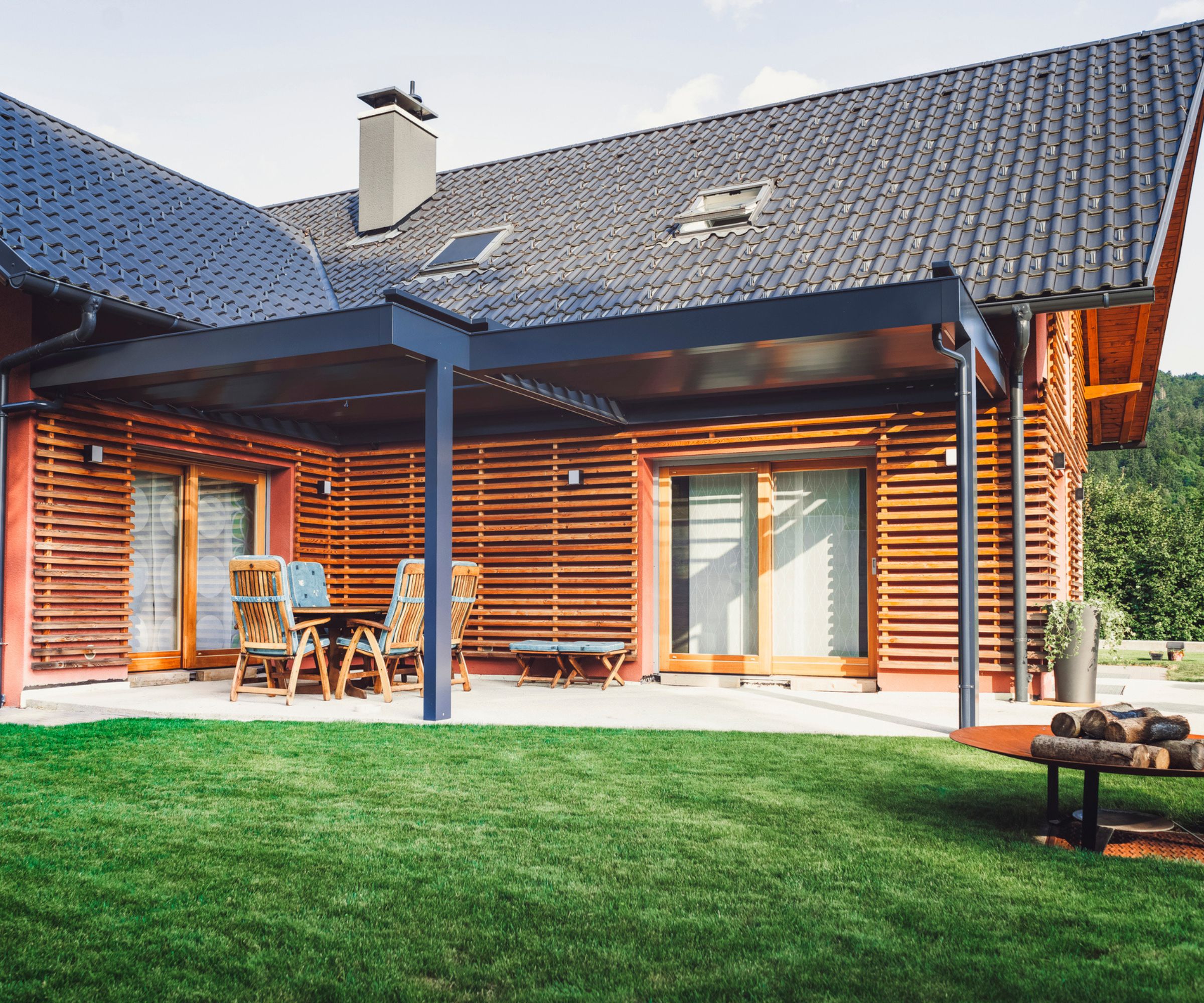
Patio covers aren't as hard-wearing as pergolas, and some models aren't even bolted or concreted to the ground. Unlike a pergola, a patio cover can blow away or break in extreme weather.
Though they're easier to install than a pergola, you will almost always need a permit for a patio cover, so while it's cheaper and faster to install, you still need to go through the lengthy process of applying for a zoning permit.
Patio covers don't hold as many people as a large pergola, so if you have a large family it may not be right for you. They also don't look quite as good as a pergola. Inexpensive patio covers with PVC roofs can look a little cheap compared to a pergola.
What are the benefits of a pergola?
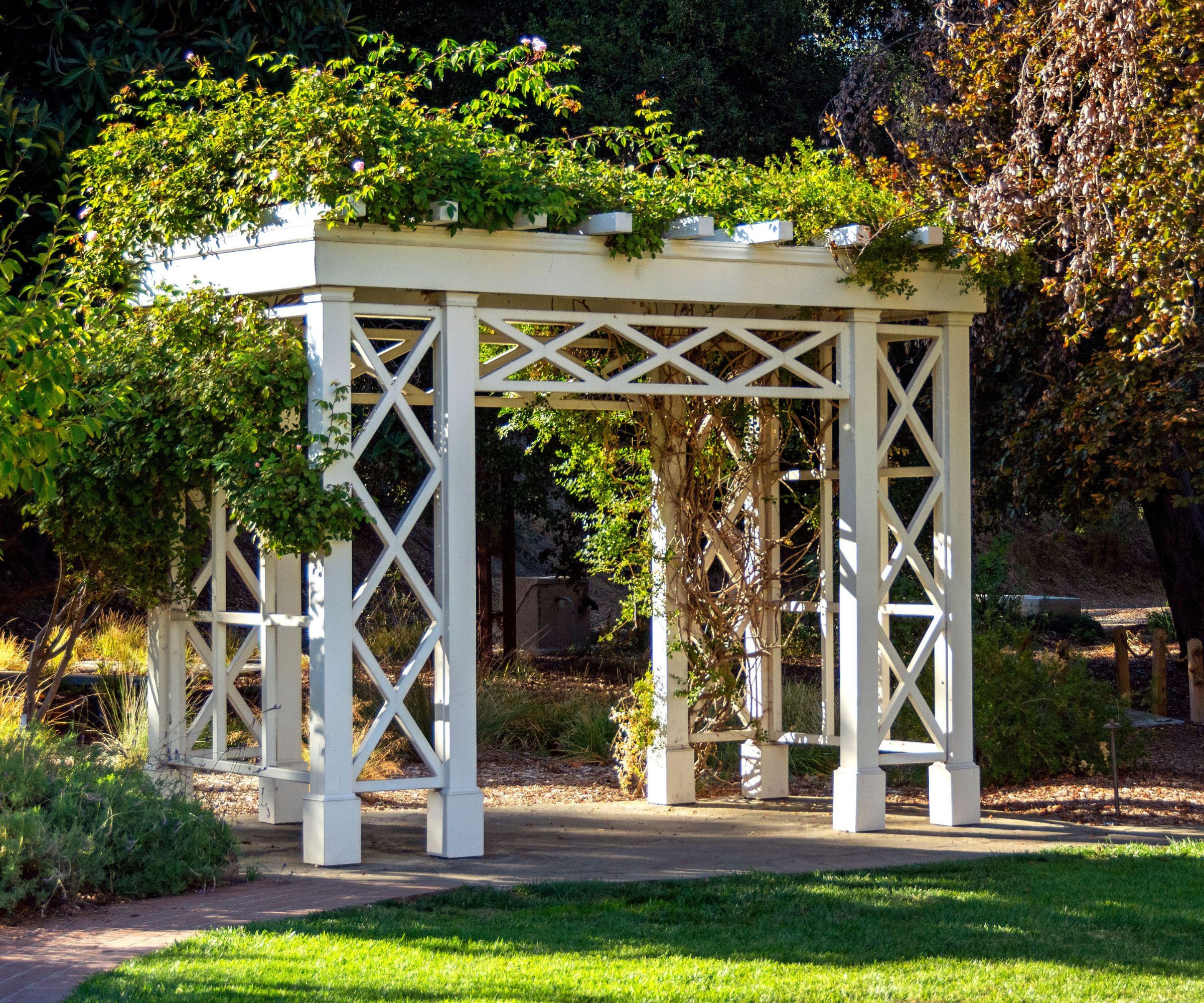
The big difference between pergolas and patio covers is that a pergola can be placed anywhere in the garden. Kevin King told me that with a pergola, 'you also have the option to place them where you want on your property, like under a tree, in a flower garden, or near a fireplace; patio covers tend to be limited to a patio or deck.'
Pergolas are also much sturdier than patio covers. Kevin says that 'Pergolas are a much stronger and sturdier structure than a patio cover, especially if built correctly. This allows you to keep it as a permanent structure in your backyard, without having to worry about the wind blowing it away.'
While patio covers can provide shade, they're enclosed structures that can get very hot, especially if they have glass or transparent acrylic roofs. A pergola is an open, airy structure, which provides shade without trapping heat.
Keen gardeners will also appreciate that pergolas can hold climbing plants, which isn't possible with a patio cover. Honeysuckle, wisteria, and other climbing plants look great trailed over the top of a pergola, providing sweet-smelling shade and a fairy tale feel.
This little pergola is perfect for making a quiet sanctuary in a quiet corner of your yard, because it has built-in privacy screens.
If you want to plant climbing plants in your pergola, you need a design like this. It has aa selection of plastic planters, and the four corners are perfect for adding in planters for climbing plants.
This pergola was created to house a hot tub, giving shelter and privacy. It also has two bars on the side, perfect for drinks and snacks.
What are the drawbacks of a pergola?
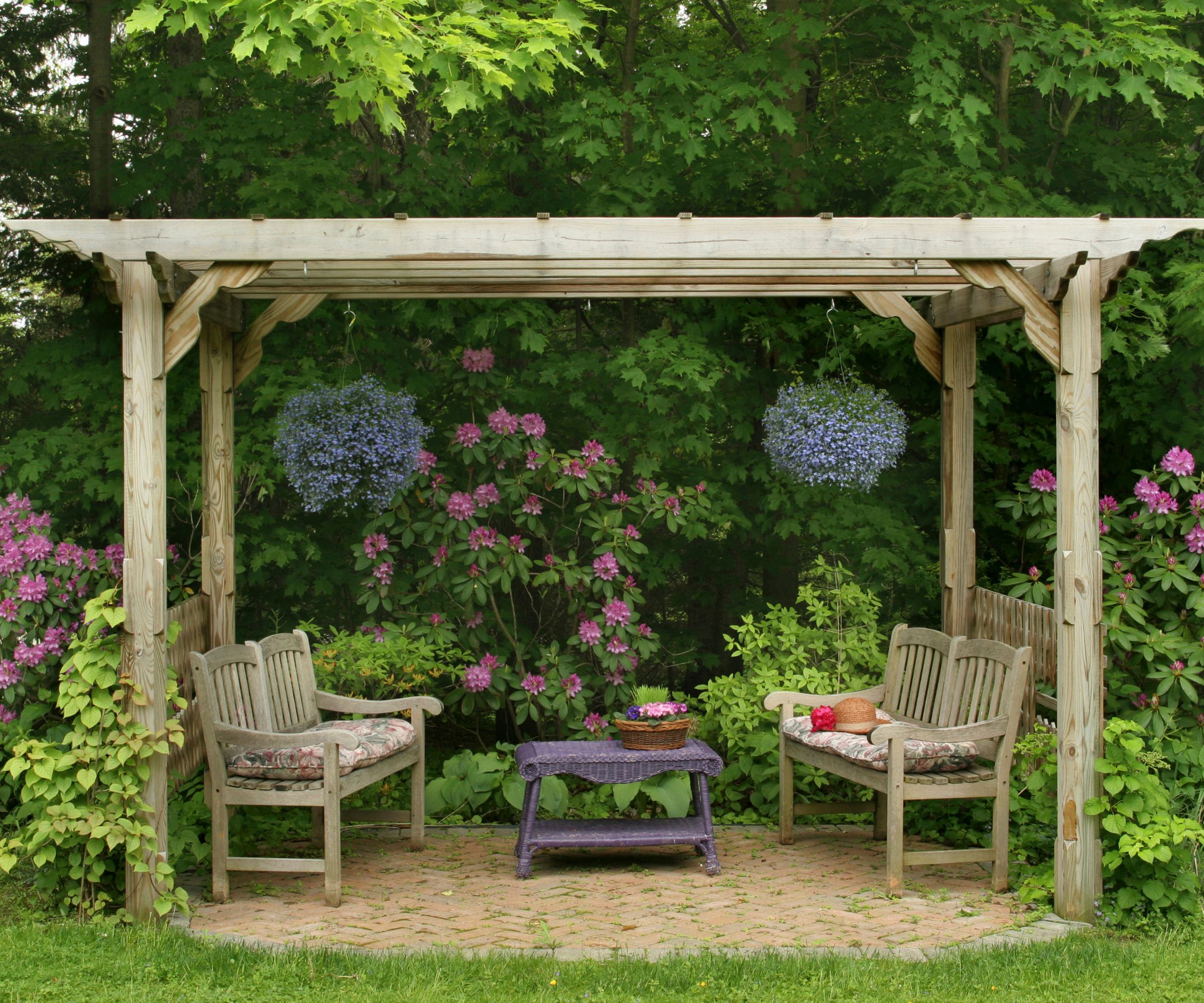
While pergolas are great, they're not as functional as patio covers. Kevin King told me that 'Because pergolas do not have a closed-off roof, they do not give protection from rain, snow, or other types of precipitation.' If your most important priority is to create shelter from the wind and rain, look to a patio cover instead of a pergola.
Pergolas also need more upkeep than patio covers. Pergolas are almost always made from wood, and even treated wood eventually needs to be treated with sealant. This isn't the case with patio covers, which are usually made from plastic or aluminum.
A pergola can completely dominate a small yard, taking a space that could be used for planting. A patio cover slots right over your patio, so it doesn't take up any more space.
Finally, pergolas are much more expensive to buy and install than patio covers, so they're not always an option if money is tight.
FAQs
Can I build a patio cover without a permit?
You will almost always need a permit to build a patio cover, because it's a permanent structure attached to your house.
Can you attach a patio cover to a fascia?
It depends on the model - some patio covers are designed to attach to fascia, but other designs are not.
While these structures are great additions to any yard, construction can easily cause issues with your neighbors. It's especially true if you're building a pergola next to a neighbor's fence. Be sure to let your neighbors know before starting any work, so you can get out in front of any potential issues.







